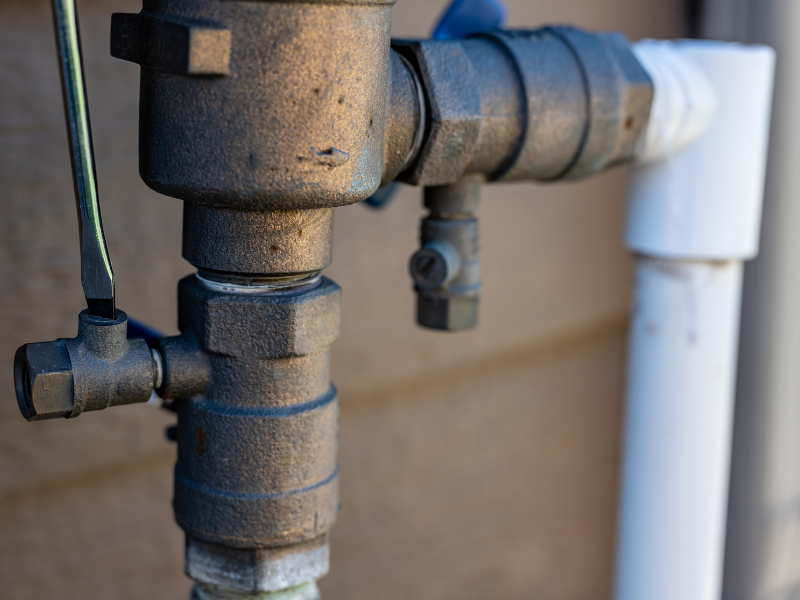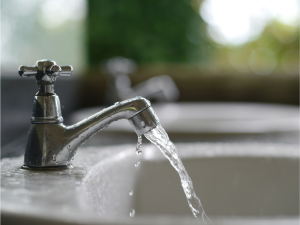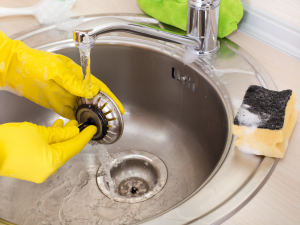Backflow assessments may not be a topic that comes up in everyday conversation, but it’s a crucial aspect of maintaining safe drinking water for homes and businesses.
So what exactly is backflow testing, and why does it matter?
In this post, we’ll answer those questions and more, leaving you with a full understanding of backflow tests and why they are critical to any first-world plumbing system.
What Is Water Backflow? — The Ultimate Guide
Before we kick off, let’s define backflow. Backflow is the undesirable reversal of flow in a water system, which can occur when there is a change in pressure or a loss of pressure in the system. This can cause water to flow in the wrong direction, potentially contaminating the drinking water supply with harmful substances like bacteria, chemicals, or pesticides.
Backflow prevention is the practice of installing devices and systems that prevent backflow from occurring. Backflow testing refers to the procedures for verifying that these devices and systems are functioning properly and effectively. This helps individuals avoid dealing with preventable plumbing issues like a pipe bursting in the summer.
During a backflow test, a licensed professional will inspect the backflow prevention devices and check the water pressure and flow rates to ensure that water is flowing in the correct direction and not back into the main water supply. This testing is necessary to identify any potential issues and prevent contamination of the water supply.
Fun Fact From the Experts
Did you know that backflow prevention devices have been around for over 100 years? The first backflow preventer was patented in 1904, and since then, the technology has continued to evolve and improve to meet the ever-changing needs of the water supply industry.
Today, there are a variety of backflow prevention devices available, from basic check valves to more advanced systems that use air gaps or multiple valves to provide added protection against backflow contamination. These devices are essential for ensuring the safety and integrity of the water supply, and they continue to play a vital role in protecting public health and safety.
What is Backflow Testing Anyway? | Why It Matters
The health risks associated with backflow contamination are significant. Drinking water contaminated with bacteria, chemicals, or other harmful substances can cause serious illness or even death. Backflow assessments are necessary to prevent these risks and ensure that drinking water is safe and clean.
Besides the health risks, backflow testing is also important because it is often required by law or regulation. Many municipalities and states require annual or bi-annual backflow assessments for commercial and industrial properties to ensure compliance with local codes and regulations. Failure to comply can cause fines, penalties, or even legal action.
What is a Backflow Test? | Commercial vs. Residential
While backflow testing is important for both commercial and residential properties, there are some differences between the two.
Commercial properties typically have more complex water systems and higher risk factors, so backflow assessments are often more involved and require more specialized equipment and expertise. Residential backflow assessments tend to be simpler and can be performed by a licensed plumber.
Regardless of the property type, backflow testing is an important part of maintaining safe drinking water.
Potable is a fundamental necessity for human health and safety. Backflow contamination can have severe consequences on the water supply, posing risks to the health and safety of the public.
Steps Involved in Backflow Testing
The following outlines the basic steps involved in a backflow assessment procedure:
- Shut off water supply: The first step in the backflow testing process is to shut off the water supply to the property being tested. This is done to prevent any water from flowing back into the public water supply while the testing is taking place.
- Inspect backflow prevention device: Once the water supply has been shut off, the certified plumber will inspect the backflow prevention device to ensure that it is properly installed and in good working condition. This may involve checking valves, testing air gaps, or examining other components of the device.
- Perform test: The plumber will then perform the backflow test by creating a reverse flow of water to simulate a backflow event. This is typically done by attaching a test kit to the backflow prevention device and running water through the device in the opposite direction of its normal flow.
- Record readings: During the test, the plumber will record readings from the test kit to measure the pressure and flow of the water as it passes through the backflow prevention device. These readings will determine whether the device is functioning properly and preventing backflow contamination.
- Interpret results: After the test is complete, the plumber will interpret the results to determine whether the backflow prevention device works as intended. If any issues are identified, the plumber will provide recommendations for repairs or upgrades to the system.
- Submit the report: Finally, the plumber will submit a report to the property owner and to any relevant regulatory agencies to document the results of the test. This report will typically include information about the testing process, the results of the test, and any recommended repairs or upgrades to the backflow prevention system.
A water backflow test should be performed by a certified professional plumber who is trained to identify and repair any issues found during the testing process. After the test, the plumber will provide a report detailing the results and recommendations for any necessary repairs or upgrades to the backflow prevention system.
Final Notes
Backflow testing is a critical part of maintaining safe drinking water in both commercial and residential properties.
By preventing backflow contamination, we can ensure that the water supply remains clean and safe for everyone to use. If you own a commercial or industrial property, it is essential to schedule regular backflow assessments to comply with local regulations.
Even if you are a homeowner, have your backflow prevention system tested periodically to ensure that your drinking water remains safe and clean. Remember, with backflow prevention, an ounce of prevention is worth a pound of cure. By prioritizing backflow testing and prevention, we can help ensure that our drinking water remains safe and healthy for generations to come.
Feel free to contact our team at Clover Contracting to learn more about the benefits of backflow assessments.








